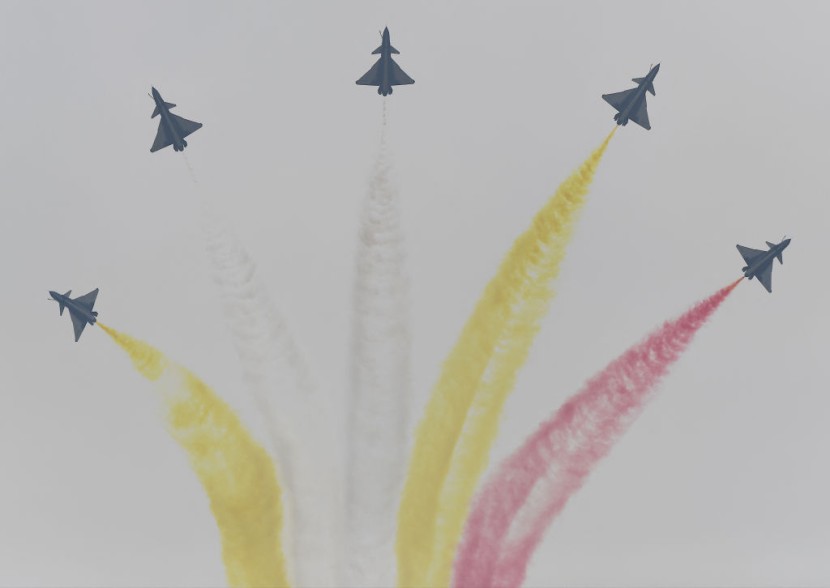
A Chinese fighter pilot demonstrates how the PLAAF trio of the J-20, J-16, and J-10 will use deadly tactics to shoot down adversaries in the Indo-Pacific.
The "I see, you shoot" teaming of the People's Liberation Army, a J-16 pilot explained Air Force's (PLAAF) fighters at the 2022 Zhuhai Air Show.
Chinese Fighter Pilot Confirms Speculation of Military Observers
A revelation that all three fighters are tactical assets in bringing down western aircraft with diverse multi-mission fighters, according to the EurAsian Times.
Such a demonstration of military tactics and precision can be applied in the Taiwan Strait as the US and Japan seek to foil the People's Republic of China (PRC). It gives an idea of how it can play out.
After US Speaker Nancy Pelosi's visit, the J-20 Mighty Dragon showed its capabilities for the first time in drills around Taiwan.
During the Zhuhai air show, the J-20 was exposed to the public on the runway tarmac for a few hours and executed aerial maneuvers and information on how it interacts with other frontline units.
PLAAF Trio Demonstrates How To Shoot Down Opponents
Last November 8th, China Central Television (CCTV)J-16 Chinese fighter pilot Zhang Yang explained how the J-20, J-16, and J-10C would work as a unit to bring down the aircraft.
Their doctrine of synchronizing units around the Mighty Dragon with large capacity J-16 and J-10C (PLAAF trio) for overlapping firepower to shoot down opponents. Called the "I see, you see" gain of air superiority.
Yang credited his J-16 heavy fighter with better range, a large payload, and advanced AESA radar to complement the other two.
According to the pilot, this triple teaming can control the skies, attack ground targets, and use seaborne assault in all three scenarios.
The Mighty Dragon is like the F-22, the information hub that gets and shares awareness of threats and targets. as a 5th generation supplemented by 4+ jets as attack and support units, unlike the F-35, it can fight.
Chinese forces now utilize sensor data to optimize the PLAAF planes in intelligent warfare.
Keeping a low profile limits the artillery of the J-20, so the J-16J-10B and J-10C will be missile carriers. Mighty Dragon will get the information and give out target data for missiles.
The J-20 is for slipping in defenses to take out aerial tankers and airborne early warning aircraft (AEW). All three fighters have the 200-kilometer PL-15 over-the-horizon missile as armament.
These 4+ fighters use Active Electronically Scanned Array Radars (AESA) to track and detect enemies; even as a group, they are challenging to defeat.
A picture showed the J-20 and other fighters last August; a YU-20 tanker was doing midair refueling. Seeing this bothered the west. The first image of the trio doing their thing was seen in November 2021.
Intelligent warfare
Using the information to gather data is critical, and the J-20 is the cornerstone to weaving everything together.
The best-kept secret is how much data can be crunched with the seamless fusion of sensors to coordinate all assets in the battlespace. Success means wiping out opposing forces; even space sensors like satellites will be players.
Equivalents of the PLAAF trio are the F-22, F-15, and F-16, but they are far older planes combining stealth, information, and payload in an integrated network.
Based on the input of a Chinese fighter pilot, it appears that the PLAAF trio is working together to shoot down adversaries.
Related Article : China Releases Footage of 'Flying Submarines' Designed as Asymmetrical Offense Against Surface Vessels
© 2025 HNGN, All rights reserved. Do not reproduce without permission.








